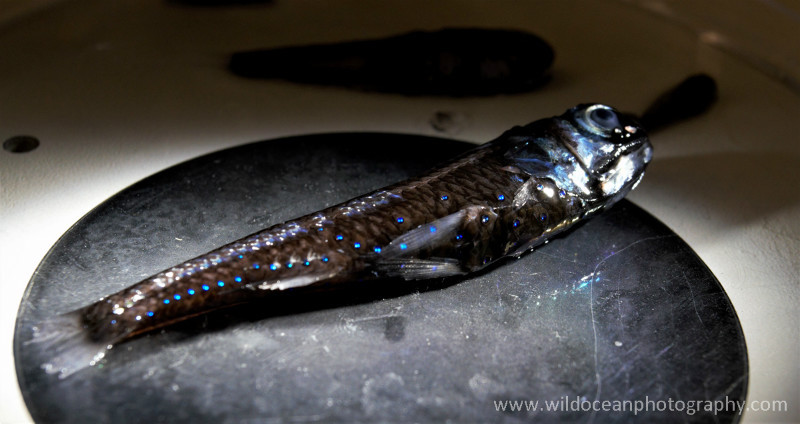

They are among the most most widely distributed and diverse of all vertebrate species and it is believed that they play an important role as prey for larger organisms. Sampling by deep sea trawling indicates that lanternfish make up as much as 65% of the deep sea biomass. In fact, they are thought to be some the most common deep ocean creatures. Our results therefore suggest that etmopterid flank markings may provide a way for reproductive isolation and hence may have facilitated speciation in the deep-sea.There are over two hundred different species of lanternfishes in the deep sea. This is not the case for other bioluminescent shark clades with no (or only few) species with flank markings. In addition, using molecular phylogenetic analyses, we demonstrate that the Etmopterus clade exhibits a greater than expected species richness given its age. Using visual modelling based on in vivo luminescence measurements from a common lanternshark species, we show that etmopterid flank markings can potentially work as a medium range signal for intraspecific detection/recognition. Recent studies, however, suggest these enigmatic photophore aggregations to play a role in intraspecific communication. The vast majority of species within the lanternshark genus Etmopterus harbour complex luminescent markings on their flanks, whose functional significance has long remained obscure. The presence of lateral photophores correlates with increased speciation in deep-sea bioluminescent sharks, DOI: 10.1098/rsos.150219 But it also contributes to a slow reproductive rate, which the team notes, has led to them being classified as "near threatened" in northern waters. Genetic testing of the sharks showed much more species diversity than was thought-they found 36 in all and suspect the bioluminescence was partly responsible, because it allows for maintaining reproductive isolation. They also noted that the sharks shimmy as they swim, twisting their bodies back and forth which causes the light they emit to appear to flick on and off, which the team believes is meant to confuse predators-in some cases it might be mistaken for light matching the surroundings causing the shark to appear invisible. They noted that males and females have light producing organs known as photophores on different parts of their bodies, and that both have the organs very near their external sex organs.Īfter the careful study of the sharks, the team determined that the purpose of the bioluminescence was to help with finding a mate-with light coming from different body parts it becomes much easier for the sharks to differentiate between genders in the dark. To find out, the team studied the sharks in their natural environment and also in large holding tanks-on the lookout for any behaviors that might be related to their ability to light up. As the researchers report, most species of the small shark have developed bioluminescence, though until now, the reason for it has remained a mystery-it does not appear to offer a means of attracting prey or warding off predators and it would seem counterproductive towards hiding from predators. Lanternsharks live in the ocean off the coast of Iceland and northern Europe all the way down to South Africa, generally in deep water-water so deep that there is no light.


 0 kommentar(er)
0 kommentar(er)
